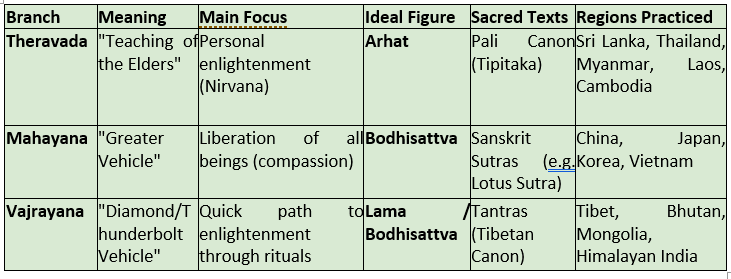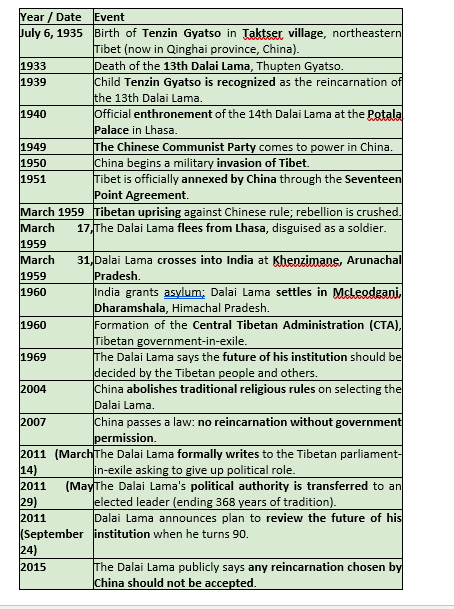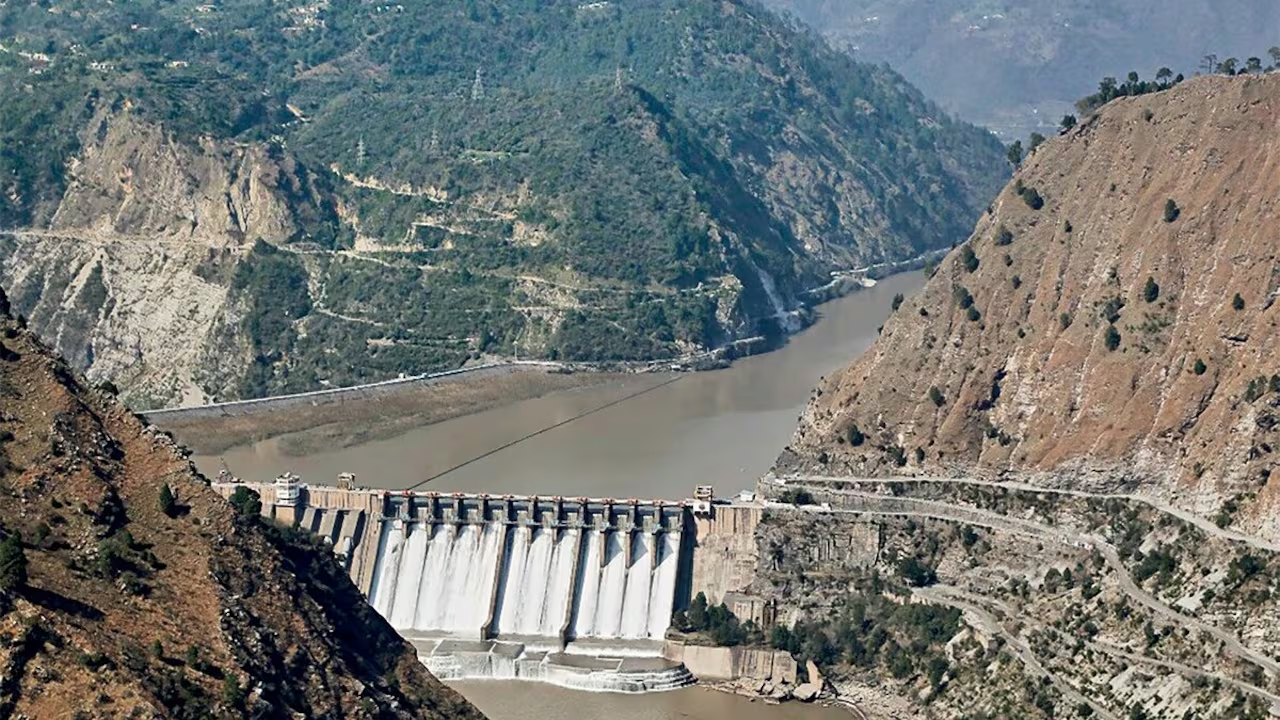- Courses
- GS Full Course 1 Year
- GS Full Course 2 Year
- GS Full Course 3 Year
- GS Full Course Till Selection
- Answer Alpha: Mains 2025 Mentorship
- MEP (Mains Enrichment Programme) Data, Facts
- Essay Target – 150+ Marks
- Online Program
- GS Recorded Course
- Polity
- Geography
- Economy
- Ancient, Medieval and Art & Culture AMAC
- Modern India, Post Independence & World History
- Environment
- Governance
- Science & Technology
- International Relations and Internal Security
- Disaster Management
- Ethics
- NCERT Current Affairs
- Indian Society and Social Issue
- NCERT- Science and Technology
- NCERT - Geography
- NCERT - Ancient History
- NCERT- World History
- NCERT Modern History
- CSAT
- 5 LAYERED ARJUNA Mentorship
- Public Administration Optional
- ABOUT US
- OUR TOPPERS
- TEST SERIES
- FREE STUDY MATERIAL
- VIDEOS
- CONTACT US
Buddhism, Borders, and Balance: India, China, and the Tibetan Dilemma
Buddhism, Borders, and Balance: India, China, and the Tibetan Dilemma

Why in the News?
- The 14th Dalai Lama, Tenzin Gyatso, will soon turn 90, marking a significant moment for Tibetans and Tibetan Buddhists.
- On this occasion, a major statement about his reincarnation is expected.
What are the Key Highlights?
- Chronology of Important Events
What is Buddhism?
- Buddhism is a major world religion and philosophy that teaches the path to end suffering and achieve enlightenment (nirvana).
- It was founded by Siddhartha Gautama, known as the Buddha, in the 6th century BCE in India.
|
Name |
Details |
|
Siddhartha Gautama |
Born in Lumbini (present-day Nepal), a prince of the Shakya clan. |
|
Attained enlightenment under the Bodhi tree in Bodh Gaya, Bihar. |
|
|
Taught the Middle Path to avoid extremes of luxury and hardship. |
- Core Teachings of Buddhism:
- Buddhism teaches a path to end human suffering through understanding, ethical living, and mental discipline.
- Its core teachings are based on the Four Noble Truths, the Eightfold Path, and concepts like Karma, Rebirth, and Nirvana.
- Four Noble Truth
|
Truth |
Explanation |
|
1. Dukkha (Suffering) |
Life is full of suffering: birth, aging, illness, and death. |
|
2. Samudaya (Cause of Suffering) |
The cause of suffering is desire, greed, and ignorance. |
|
3. Nirodha (End of Suffering) |
Suffering can be ended by removing desire and attachment. |
|
4. Magga (Path to End Suffering) |
There is a path, the Eightfold Path that leads to the end of suffering. |
- The Noble Eightfold Path (Ashtangika Marga)
|
Category |
Path Element |
Meaning |
|
Wisdom (Prajna) |
1. Right View |
Understand the Four Noble Truths |
|
2. Right Intention |
Think with compassion and non-violence |
|
|
Ethical Conduct (Sila) |
3. Right Speech |
Speak truthfully and kindly |
|
4. Right Action |
Behave morally; avoid killing, stealing, etc. |
|
|
5. Right Livelihood |
Earn a living without harming others |
|
|
Mental Discipline (Samadhi) |
6. Right Effort |
Develop good thoughts; avoid negative ones |
|
7. Right Mindfulness |
Be aware of body, mind, and feelings |
|
|
8. Right Concentration |
Practice meditation to gain inner peace |
- Karma and Rebirth
- Karma: Every action has a consequence—good or bad.
- Rebirth (Samsara): One is reborn in a new life depending on karma.
- Goal is to escape the cycle of rebirth through enlightenment.
- Nirvana
- Nirvana means freedom from suffering and rebirth.
- It is the ultimate goal in Buddhism.
- It is a state of peace, wisdom, and liberation.
- Middle Path
- Buddha taught to avoid extremes of self-indulgence and self-torture.
- The Middle Path balances spiritual discipline and practical life.
Main Branches of Buddhism

Major Buddhist Pilgrimage Sites
|
Place |
Location (Country/State) |
Event Associated |
Significance |
|
Lumbini |
Rupandehi District, Nepal |
Birthplace of Siddhartha Gautama |
Buddha was born here in 563 BCE as Prince Siddhartha in the royal Shakya clan. |
|
Bodh Gaya |
Gaya District, Bihar, India |
Enlightenment under the Bodhi Tree |
Attained enlightenment at age 35 and became the Buddha (Awakened One). |
|
Sarnath |
Near Varanasi, Uttar Pradesh |
First Sermon (Dhamma Chakra Pravartana) |
Taught the Four Noble Truths and the Eightfold Path to his first five disciples. |
|
Kushinagar |
Kushinagar District, Uttar Pradesh |
Mahaparinirvana (Death of the Buddha) |
Buddha passed away here at the age of 80 and attained final liberation (nirvana). |
Difference between Indian Buddhism & TIbetan Buddhism
|
Aspect |
Indian Buddhism |
Tibetan Buddhism |
|
Origin |
Originated in India in the 6th century BCE with Gautama Buddha |
Spread from India to Tibet around the 7th century CE |
|
Main Schools |
Theravāda, Mahayana, and early Vajrayana |
Based on Vajrayana (Tantric Buddhism) with Mahayana and local Bon elements |
|
Sacred Texts |
Pali Canon (Theravada); Sanskrit Mahayana Sutras |
Tibetan Kangyur (translated words of Buddha) and Tengyur (commentaries) |
|
Language of Texts |
Pali, Sanskrit |
Classical Tibetan |
|
Deity Worship |
Limited or symbolic (mainly in Mahayana and Vajrayana) |
Extensive use of deities, rituals, mandalas, and mantras |
|
Spiritual Goal |
Nirvana (freedom from rebirth); Bodhisattva ideal (in Mahayana) |
Enlightenment through Tantric path; combine wisdom and compassion |
|
Monastic Practices |
Emphasis on monastic discipline, meditation, and study |
Strong monastic tradition with rituals, visualizations, and tantras |
|
Role of Lama |
Guru or teacher present but not central in early schools |
Lamas (esp. Dalai Lama) are central spiritual and political leaders |
|
Unique Features |
Original source of Buddhism; philosophical purity |
Mix of Tantric Buddhism, local Bon religion, and Indian Mahayana |
|
Status Today |
Buddhism declined in India but survives in some areas |
Practiced mainly in Tibet, Bhutan, Ladakh, and among Tibetan exiles |
What are the Significances?
- Cultural Bridge Between India and Tibet:
- Buddhism, which originated in India, deeply shaped Tibetan identity.
- Tibet regards India as the holy land of the Buddha, strengthening spiritual and emotional ties between the two.
- Soft Power Tool for India:
- India hosts key Buddhist pilgrimage sites (e.g., Bodh Gaya, Sarnath) and the Dalai Lama, projecting moral and cultural leadership.
- Promotes India's image as a peaceful Buddhist hub, countering China’s regional narrative.
- Symbol of Tibetan Resistance Against China:
- Tibetan Buddhism, led by the Dalai Lama, symbolizes Tibet’s struggle for religious and political freedom.
- China’s control over Tibetan monasteries and its attempt to appoint the next Dalai Lama is seen as interference in religious freedom.
- Strategic Leverage for India:
- The Dalai Lama and the Tibetan government-in-exile in India serve as a diplomatic card in India-China tensions, especially after border conflicts.
- India's Buddhist legacy supports regional ties with Bhutan, Nepal, and Southeast Asian Buddhist countries.
- Source of Diplomatic Tension with China:
- China opposes any official engagement with the Dalai Lama, seeing it as a challenge to its sovereignty over Tibet.
- India's honoring of Tibetan culture is viewed by China as support for separatism, fueling mistrust.
- Global Buddhist Diplomacy and Influence:
- Both India and China seek to lead global Buddhist forums.
- While China hosts state-sponsored events, India relies on historical authenticity and spiritual legitimacy, especially through the Dalai Lama’s influence.
What are the Challenges and Way Forward?
|
Challenges |
Way Forward |
|
1. Dalai Lama’s Succession Conflict: China insists on appointing the next Dalai Lama, rejecting India-based Tibetan leadership. |
India and like-minded countries must push for international recognition of the Dalai Lama's right to determine his reincarnation without Chinese interference. |
|
2. Tibetan Issue as a Geopolitical Flashpoint: Tibet remains a core irritant in India–China relations, especially after border tensions. |
India should adopt a measured yet firm Tibet policy supporting cultural freedom and human rights, while avoiding overt political escalation. |
|
3. China’s Religious Control Strategy: China uses its state authority to control monasteries and silence dissent inside Tibet. |
Global pressure through UN bodies, human rights forums, and Buddhist networks can highlight the need for religious freedom in Tibet. |
|
4. India Hosting the Tibetan Government-in-Exile: India’s shelter to the Dalai Lama and CTA is seen by China as a hostile act. |
India must maintain this support as a moral and cultural responsibility, while keeping official political engagements discreet but consistent. |
|
5. Declining Global Attention on Tibet: With shifting global priorities, Tibet’s issue is losing international urgency. |
Tibetans in exile should enhance global digital diplomacy, leveraging the Dalai Lama’s moral authority to keep the issue alive in international forums. |
|
6. Competing Buddhist Diplomacy: China projects itself as the guardian of Buddhism, challenging India’s civilizational legacy. |
India should actively promote Buddhist heritage diplomacy (e.g., Nalanda, Bodh Gaya) to reinforce its position as the spiritual homeland of Buddhism. |
Conclusion
The Tibetan issue, centered around the Dalai Lama’s legacy and the future of Tibetan Buddhism, is more than a religious matter, it is a complex intersection of faith, identity, and geopolitics. For India, it reflects a balance between moral responsibility and strategic caution. For China, it represents a question of sovereignty and internal control. For Tibetans, it remains a struggle for cultural survival and spiritual freedom. As the Dalai Lama approaches 90, the choices made by all three actors will shape not only the future of Tibet but also the broader contours of peace and stability in the Himalayan region and Asia at large.
|
Ensure IAS Mains Question Q. “The future of the Tibetan cause hinges not just on spiritual continuity, but also on geopolitical strategy.” In light of the upcoming 90th birthday of the 14th Dalai Lama and the expected announcement regarding his reincarnation, critically examine the implications for India’s foreign policy and its Buddhist diplomacy. (250 words) |
|
Ensure IAS Prelim MCQ Q. The Noble Eightfold Path (Ashtangika Marga) is classified under which three main categories?
Answer: c Explanation The Eightfold Path is grouped under
|




